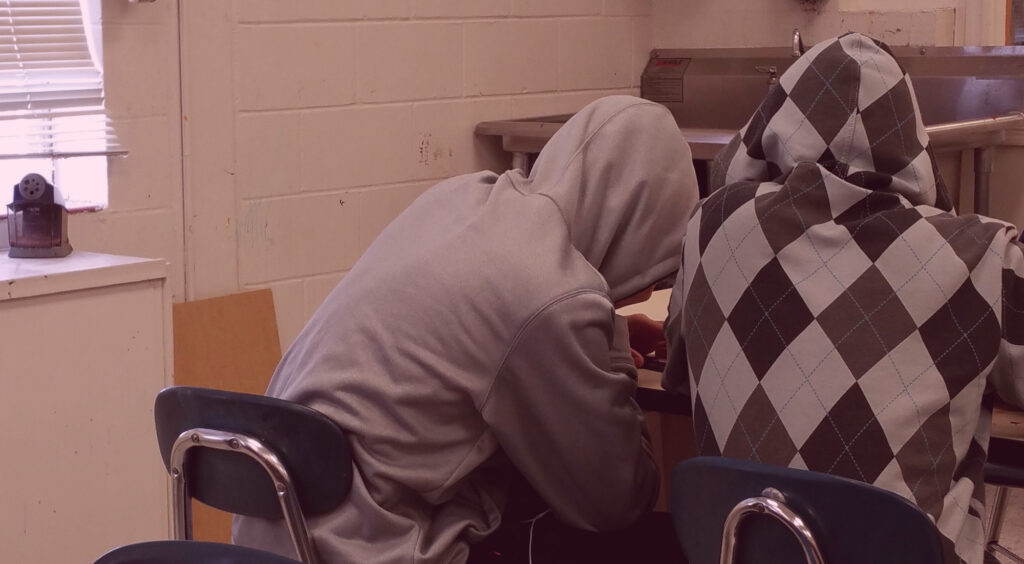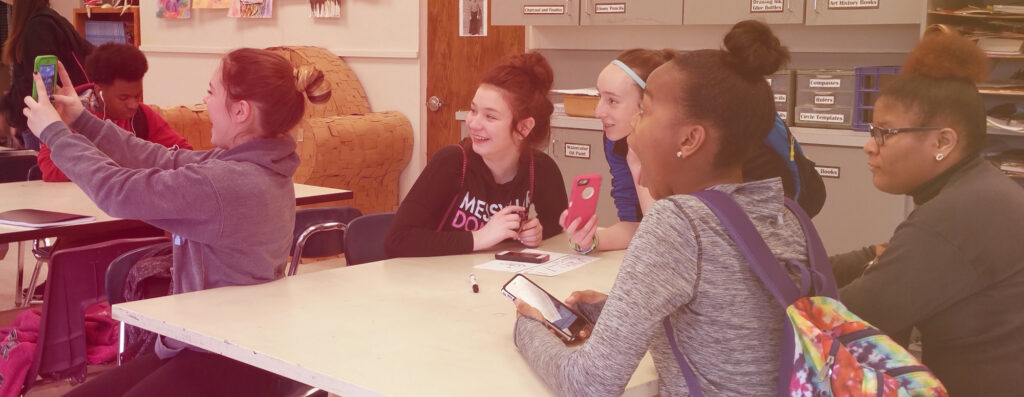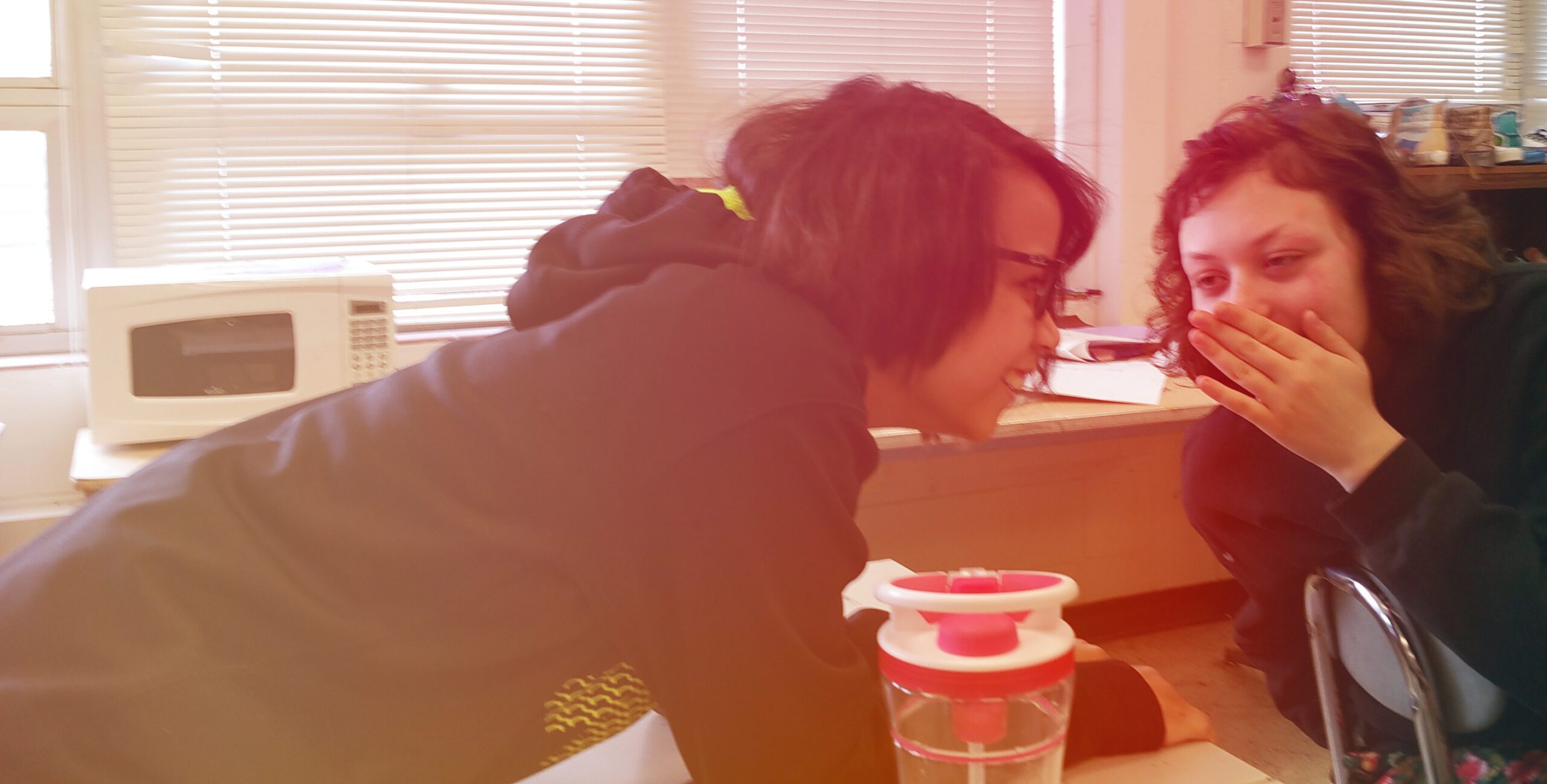Every teacher has a pet peeve or two when it comes to student behavior. For me, it’s students talking while I am talking. I never allow the problem to persist, yet as second semester progresses, I am, for some reason, still struggling with side conversations. I pride myself on my classroom management, yet I am having trouble with a couple of my classes and their apparent love of talking while I talk. Or when their classmates speak. Or during critiques. Or pretty much anytime else. Let’s be honest–nonstop chatter gets annoying, and it needs to stop.
I needed to fix this semester’s problem before it got worse, and I decided to go back to the classroom management basics. It’s good to revisit those strategies on a semi-regular basis, but particularly important when problems begin to creep up. I think I have the issue under control at this point (fingers crossed), and honestly, it wasn’t too difficult.
To stop side conversations, you need three things: a plan, a little bit of patience and persistence, and a positive attitude.
The Plan: Escalating Interventions
Escalating interventions are the most basic classroom management strategies, increasing your effort level as needed to stymie unwanted behavior. Begin by making eye contact and using physical proximity. If that’s not working, engage students by name and make them part of the discussion. If that’s still not working, directly address the problem. You may choose to do so during class, after instruction is over, or even after class. I don’t like to write office referrals, but the option needs to be there as a last resort. It’s simple–nothing more than classroom management 101, but it needs to mix with some stubbornness and consistency on your part.

Patience and Persistence
Remember some students need to be taught how to behave. This also goes back to the basics: you need to have clear expectations, model the desired behavior, and reinforce those behaviors in a positive way. This takes persistence, but it is well worth it.
It also takes persistence to consistently address troublesome behavior. Every time a conversation happens during your demonstration, stop and correct the behavior. Yes, kids may have less time to work. No, you may not get through all of the content you wanted or needed to. But that’s a small price to pay to fix behaviors that could otherwise plague you the rest of the year.
When side conversations creep up, stop talking until they stop. Send students back to their seats to practice again. Call them out. Stand closer to the offenders. Any and all of those strategies can work. But whatever you do, do not talk over your students. Once you get started down that road, it’s tough to change direction. Be patient and persistent in correcting behaviors until protocol for proper behavior has been established and consistently followed.

Stay Positive
Remember to keep a positive climate in your classroom–for me, classroom climate is the most important tool to curbing unwanted behaviors. I don’t think punishments and book-work solve the problem long term, and threatening those types of things (if you don’t plan to follow through) can actually make things worse.
Try not to become overly emotional. Yelling at students will likely exacerbate the issue. This is a problem to solve–nothing more. Don’t let it escalate into some kind of personal, emotional battle or power struggle. A calm, collected teacher is more likely to have calm, collected students, and modeling behavior–even with subtle body language and a quiet voice–can do wonders to help your students.
Can you turn things around if these problems already exist? Of course! It takes just 3 easy steps:
- Simply and clearly address the problem with your class.
- Share your expectations for their behavior, and model that behavior.
- Follow through with your plan using patience, persistence, and positivity.
Side conversations are undoubtedly annoying, but they can be taken care of with some simple steps and consistency on your part. Even if the problem has persisted this far into the year, it isn’t too late to turn things around!
What are your biggest pet peeves and annoyances with student behavior?
What are your favorite strategies for stopping side conversations?
Magazine articles and podcasts are opinions of professional education contributors and do not necessarily represent the position of the Art of Education University (AOEU) or its academic offerings. Contributors use terms in the way they are most often talked about in the scope of their educational experiences.





